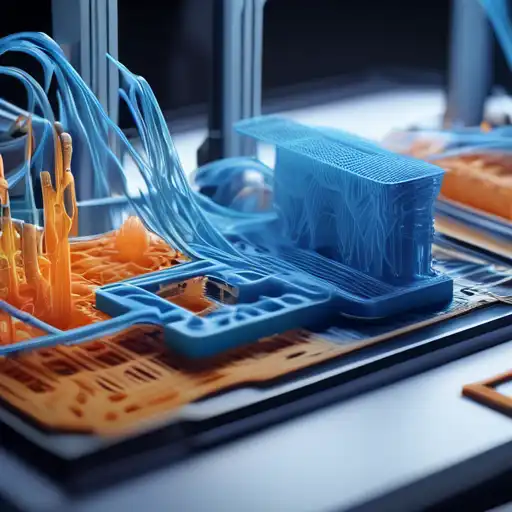The Revolutionary World of 3D Printing
3D printing, also known as additive manufacturing, is a process of creating three-dimensional objects from a digital file. This technology has been around since the 1980s but has gained significant attention in recent years due to its potential to revolutionize manufacturing, healthcare, and even the construction industry.
How Does 3D Printing Work?
The process begins with a digital 3D model, which is then sliced into thin layers by specialized software. The 3D printer then builds the object layer by layer, using materials such as plastic, metal, or even concrete. This method allows for complex shapes and structures that would be difficult or impossible to achieve with traditional manufacturing techniques.
The Benefits of 3D Printing
3D printing offers numerous advantages, including:
- Customization: Products can be tailored to individual needs without the need for expensive molds or tooling.
- Speed: Prototypes can be produced quickly, accelerating the development process.
- Cost-Effectiveness: Reducing material waste and the need for inventory, 3D printing can lower production costs.
- Sustainability: By using only the necessary materials, 3D printing minimizes waste and energy consumption.
Applications of 3D Printing
From healthcare to aerospace, 3D printing is making its mark across various industries. In healthcare, it's used for creating prosthetics, dental implants, and even bioprinting tissues. The aerospace industry benefits from lightweight, complex parts that reduce fuel consumption. Meanwhile, in the construction sector, 3D printing is being explored for building homes quickly and affordably.
Challenges and Future Directions
Despite its potential, 3D printing faces challenges such as material limitations, high costs for industrial-grade printers, and intellectual property concerns. However, ongoing research and development are addressing these issues, paving the way for broader adoption.
As we look to the future, 3D printing promises to further blur the lines between the digital and physical worlds. With advancements in materials and technology, the possibilities are limitless. From personalized medicine to sustainable manufacturing, 3D printing is indeed creating the future layer by layer.
For more insights into the latest technological innovations, check out our technology trends section.
